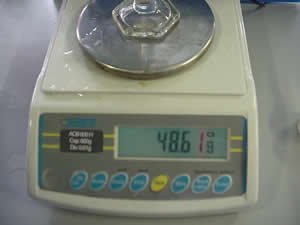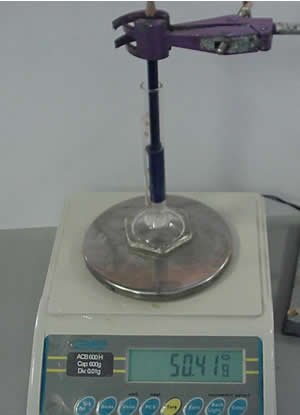Place a beaker,
three quarters full of water, onto an electronic scale. Partly submerge
your finger in the water as shown on the right. Do not touch the bottom
of the beaker. What do you notice happens to the reading shown by the
electronic scale?
Click to see a 120kb video of what happens.
Can you explain this?

Now let us try this activity. In a 10 ml measuring cylinder place, approximately, 6 ml of water.
Look at the image on the right. What is the exact reading of the volume of water? The reading must be given to one decimal place.

Place the measuring cylinder on the electronic scale and record the reading.
The reading must be recorded to two decimal places.

A pencil is partly submerged in the water as shown on the right.
What is the level of the water in the measuring cylinder?
What is the volume of water displaced by the pencil? Give your answer to one decimal place.

Look at the image on the right. What is the reading of the scale to two decimal places?
Allowing for a +/- 0.05 ml error when recording the volume of water using the measuring cylinder, what do you notice about the volume of water displaced and the increase in the force measured by the electronic scale?
